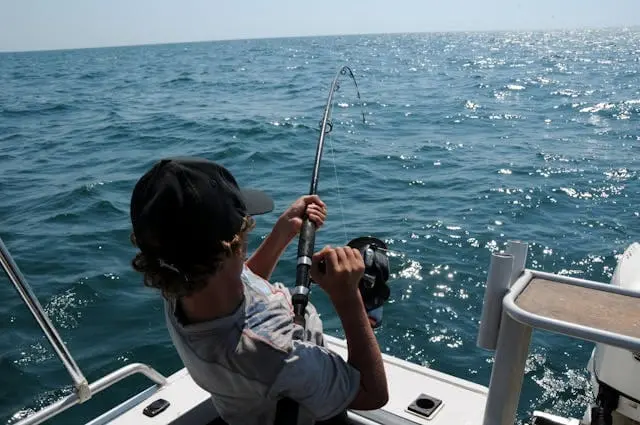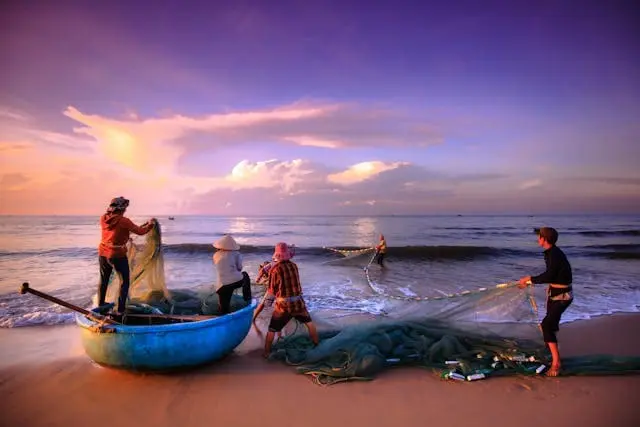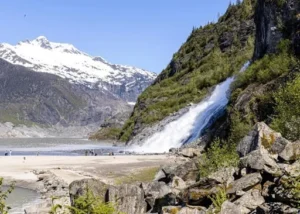Have you ever wondered if fishing in Alaska can help make the economy better?
Yes, the fishing industry in Alaska is a major driver of economic growth, contributing billions of dollars annually and creating over 100,000 jobs across various sectors. As one of the largest seafood producers in the world, Alaska accounts for nearly 60% of the total U.S. seafood harvest, with exports reaching over 100 countries.
Throughout this blog, we’ll examine how fishing in Alaska contributes to economic prosperity. From creating jobs and employment opportunities to generating revenue through tourism and exports, we’ll uncover how the fishing industry fuels Alaska’s economy.
Moreover, we’ll explore the potential for foreign investment and the opportunities for non-residents to participate in Alaska’s fishing sector. By analyzing the long-term economic impact and sustainability of fishing practices in Alaska, we aim to provide insights into how this industry can continue to drive growth while preserving the state’s natural resources.
Alaska’s Fishing Industry
The industry of fishing in Alaska is a cornerstone of the state’s economy and culture, with a rich history dating back to the 1880s:
- Vital to Economy and Culture: The industry is a significant part of Alaska’s identity, providing jobs for residents and boosting the economy.
- Abundant Resources: Alaska’s vast land and water resources, including over three million lakes and an extensive coastline, support abundant fish and wildlife, making it a major player in the world seafood market.
- Sustainability Efforts: The industry is known for its sustainability efforts, which ensure the responsible management of seafood species for future generations.
- Employment and Economic Impact: The industry employs tens of thousands of individuals and generates billions of dollars in economic activity annually, creating additional secondary jobs.
- Diverse Seafood Production: Alaska produces various seafood, including salmon, crab, cod, and halibut, all managed with sustainable practices.
The fishing season in Alaska is split into five sectors, with different regions known for various kinds of fish:
- Year-round Operation: While the industry heavily operates during June, it continues throughout the year, with some sectors active nearly the entire year.
- Equipment and Supplies: Alaska’s fishing industry relies on equipment such as fishing boats equipped with essential tools for harvesting fish. The availability of fishing supplies is crucial for maintaining operations, even in remote villages.
Alaska’s fishing industry provides employment, boosts the economy, and offers high-quality seafood products to domestic and international markets.

Alaska Fishing Industry Economic Growth Potential
The Alaska fishing industry holds significant economic growth potential in 2024, with strategic investments in aquaculture playing a crucial role in sustainable food production and economic development.
Alaska’s seafood industry is a major employment and economic driver, directly employing tens of thousands of individuals, creating additional secondary jobs, and generating billions of dollars in economic activity annually.
Alaska fishing packages offer comprehensive options for anglers, providing guided excursions, accommodations, and equipment rental for unforgettable fishing experiences in the Last Frontier.
The industry’s commitment to sustainable management practices ensures the long-term viability of commercially harvested seafood species, supporting both current and future generations.
- Alaska’s fishing industry, mandated by sustainable management practices, is globally renowned.
- The industry’s commitment to sustainability supports local economies and the state.
- Emphasis on value-added products and marketing expands domestic and foreign markets.
- Fisheries contribute substantially to local government revenue through various taxes.
Fishing License in Alaska For Non-Residents
Obtaining a fishing license is necessary for residents and non-residents looking to fish in Alaska before casting a line. Non-residents aged 16 and older must have a fishing license to fish in fresh and salt waters in Alaska. The cost of a non-resident fishing license varies depending on the duration of the license:
- 1 Day: $15
- 3 Days: $30
- 7 Days: $45
- 14 Days: $75
- Annual: $100
Additionally, non-residents planning to fish for King Salmon in Alaska must purchase a King Salmon Stamp. The cost of the King Salmon Stamp for non-residents is as follows:
- 1 Day: $10
- 3 Days: $20
- 7 Days: $30
- 14 Days: $50
- Annual: $100
These licenses and stamps can be purchased online through the Alaska Department of Fish & Game website, at local retailers, chain stores, outdoor stores, fishing guides, lodges, or outfitters.
Can Fishing in Alaska Drive Economic Growth?
Alaska’s pristine waters and diverse marine ecosystems have positioned it as a premier destination for anglers and commercial fishermen worldwide. However, the significance of Alaska’s fishing industry extends beyond its natural allure; it serves as a key driver of economic growth in the region.
With over 34,000 miles of coastline and more than 3 million lakes, Alaska boasts unparalleled fishing opportunities. According to the Alaska Seafood Marketing Institute, the state’s seafood industry contributes significantly, with an estimated $5.7 billion annual economic output.
The fishing industry employs substantial people and supports jobs statewide, as reported by the Alaska Department of Labor and Workforce Development. These jobs span various sectors, including commercial fishing, seafood processing, and tourism-related activities.
Impact of Alaska Fishing on the Local Economy
| Aspect | Description |
| Job Creation | Provides employment for over 100,000 individuals in Alaska. |
| Revenue Generation | Contributes significantly to local and state economies through licenses, permits, and taxes. |
| Small Business Support | Supports small businesses such as gear suppliers and seafood restaurants. |
| Tourism and Recreation | Boosts local economy through fishing-related tourism activities. |
| Cultural Preservation | Preserves cultural heritage and traditions of indigenous communities, enhancing tourism appeal. |
Economic Opportunities in Alaska’s Fishing Industry
Alaska’s fishing industry offers many job opportunities for individuals looking to work in this dynamic and rewarding field. Some of the job opportunities available in Alaska’s fishing industry include:
- Deckhand: Deckhands work on fishing boats, assisting with various tasks related to fishing operations, maintenance, and safety procedures.
- Fish Processor: Fish processors work in seafood processing plants, handling and processing fish to prepare them for distribution and sale.
- Boat Captain: Boat captains are responsible for navigating fishing vessels, overseeing fishing operations, and ensuring the safety of the crew and vessel.
- Purser/Quality Control Manager: Purser/Quality Control Managers manage the quality control processes onboard fishing vessels. Ensuring that all products meet quality standards.
- Assistant Cook/Cook: Assistant Cooks and Cooks work in the galley of fishing vessels. Preparing meals for the crew during fishing expeditions.
- Assistant Engineer/Engineer: Engineers are responsible for maintaining and repairing the mechanical systems onboard fishing vessels, ensuring all equipment is in working order.
- First Mate/Master/Captain: First Mates, Masters, and Captains hold leadership roles onboard fishing vessels, overseeing operations, navigation, and safety protocols.
- Housekeeper: Housekeepers are responsible for maintaining cleanliness and order onboard fishing vessels, ensuring a safe and hygienic environment for the crew.
The long-term Economic Impact of Alaska Fishing
The long-term economic impact of Alaska fishing is substantial and enduring. With its well-managed fisheries and sustainable practices, the industry provides consistent employment for thousands of individuals and generates billions of dollars in annual economic activity.
Alaska’s fishing sector contributes significantly to local and state revenue streams through taxes, permits, and licensing fees. Moreover, the industry supports a network of small businesses, stimulates tourism, and preserves cultural heritage.
This sustained economic activity underscores Alaska fishing’s vital role in driving long-term economic growth, stability, and prosperity for the state and its communities.
Foreign Investment in Alaska Fishing and Economic Growth
Foreign investment in Alaska’s fishing industry is crucial in driving economic growth by contributing to the state’s seafood sector. Alaska, harvesting two-thirds of the nation’s seafood, generates over $15 billion in economic output annually, creating 100,000 jobs and $6 billion in labor income.
The industry’s impact extends to international markets, with nearly 1 million metric tons of seafood exported in 2019, bringing $3 billion into the U.S. economy. Foreign investment in Alaska’s fishing industry not only supports local economies but also sustains critical infrastructure, provides employment opportunities, and enhances the state’s economic prosperity.
Can Foreigners Find Economic Prosperity Through Fishing Jobs in Alaska?
Yes, foreigners can find economic prosperity through fishing jobs in Alaska. The state’s fishing industry offers employment opportunities in various sectors, including commercial fishing, seafood processing, and tourism. Foreigners can contribute to and benefit from Alaska’s thriving fishing economy, supporting their livelihoods and economic prosperity.
Conclusion
Fishing in Alaska is a livelihood and a cornerstone of economic growth, offering employment, revenue, and cultural preservation. With sustainable practices and foreign investments, Alaska’s fishing industry ensures prosperity for residents and outsiders, enhancing the state’s global presence and economic vitality.
FAQs
How Does Fishing Contribute to the Overall Economy of Alaska?
Fishing significantly boosts Alaska’s economy by providing employment, generating revenue through taxes and fees, supporting small businesses, and stimulating tourism.
How Does Fishing in Alaska for Salmon Contribute to its Economy?
Fishing for salmon in Alaska is a major economic driver. It provides jobs in commercial fishing and processing sectors, attracts tourists, and generates revenue through sales and exports of salmon products.
What Impact Does Fishing in Alaska for Halibut Have on its Economy?
Fishing for Halibut contributes to Alaska’s economy by creating employment opportunities, supporting businesses involved in processing and distribution, and attracting tourists interested in Halibut fishing charters.
What are the Challenges Facing Alaska’s Fishing Industry Regarding Economic Growth?
Challenges include fluctuating fish populations, environmental concerns, regulatory constraints, competition from foreign fisheries, and infrastructure limitations hindering access to remote fishing areas.
What are the Cultural and Societal Benefits of Alaska’s Fishing Industry?
Alaska’s fishing industry preserves cultural heritage, sustains traditional fishing practices of indigenous communities, fosters community cohesion, and supports a sense of identity and pride among residents.
How Does Alaska’s Fishing Industry Support Local Businesses and Communities?
The industry supports a network of local businesses, such as gear suppliers, boat repair shops, and seafood markets, creating jobs and stimulating economic activity in rural communities. Additionally, revenue generated from fishing helps fund local infrastructure and services.












